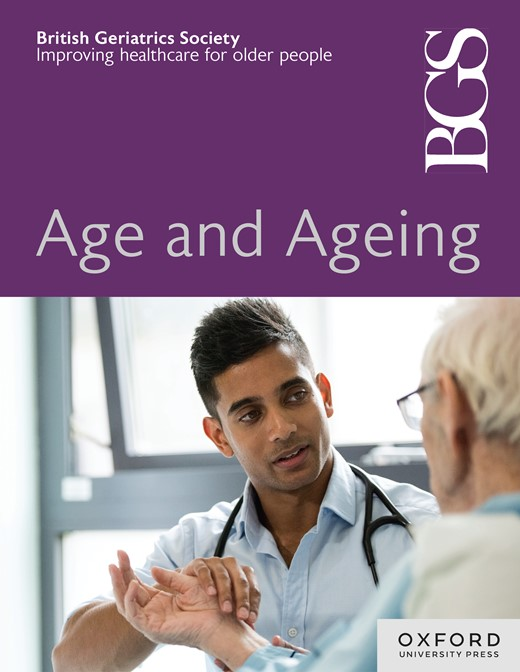3010改善急性虚弱病房的骨骼健康评估和管理
IF 7.1
2区 医学
Q1 GERIATRICS & GERONTOLOGY
引用次数: 0
摘要
脆性骨折是英国发病率和死亡率的重要原因。据估计,每年发生54.9万例脆性骨折,造成了巨大的经济和社会成本。通过识别和治疗那些有风险的人,我们可以减少脆性骨折的发生率。我们希望评估如何在急性虚弱病房(AFU)就诊的患者中优化骨骼健康管理。方法:我们对因身体虚弱而跌倒的AFU患者进行回顾性分析。2 PDSA(计划、实施、研究和行动)周期分别在2023年和2024年进行。我们审核患者是否进行了全面的骨骼健康评估(钙、维生素D水平和FRAX评分),以及他们是否已经开始接受适当的治疗。干预措施包括针对老年医学团队成员的多次教育会议、更新的一级和二级预防指南以及在所有老年护理病房可见的简明海报指南。结果在两个周期内,我们注意到入院患者的骨骼健康评估有所改善。在我们的周期结束时,48%的人有合适的骨骼健康血液,而之前是13%,30%的人有FRAX评分,而之前是7%。33%的患者有明确的骨骼健康治疗计划,而在周期开始时,这一比例为0%。结论1。事实证明,教育是一种中等成功的工具,可以提高AFU收治的虚弱患者对骨骼健康的认识,也可以增加对这些患者的适当评估和管理。2. 尽管如此,大多数患者没有接受评估。可能的限制因素包括时间、临床灵敏度和最佳治疗方案的不确定性。3. 该QIP证明了开发骨折联络服务的必要性,以便为体弱人群提供可靠的评估和管理。本文章由计算机程序翻译,如有差异,请以英文原文为准。
3010 Improving the assessment and management of bone health on an acute frailty unit
Introduction Fragility fractures are a significant cause of morbidity and mortality in the UK. An estimated 549,000 fragility fractures occur each year, with a significant financial and social cost. By identifying and treating those at risk we can reduce the incidence of fragility fractures. We wished to assess how we could optimise management of bone health in those presenting to our acute frailty unit (AFU). Method We conducted a retrospective review of patients admitted to AFU with falls on a background of frailty. 2 PDSA (plan, do, study and act) cycles were undertaken in 2023 and 2024 respectively. We audited if patients had a full assessment of bone health (calcium, Vitamin D levels and FRAX score) and if they had been started on appropriate treatment. Interventions included multiple educational sessions for members of the elderly medicine team, updated guidelines for primary and secondary prevention and concise poster guidelines visible on all elderly care wards. Results Over two cycles, we noted an improvement in bone health assessments among those admitted. By the end of our cycles, 48% had appropriate bone health bloods compared to 13% prior and 30% had a FRAX score calculated compared to 7% before. 33% of the patients had a clearly defined treatment plan for bone health compared to 0% at the start of the cycle. Conclusions 1. Education proved a moderately successful tool for increasing the awareness of bone health in frail patients admitted to AFU and also in increasing appropriate assessment and management of these patients. 2. Despite this, the majority of patient’s did not receive an assessment. Possible factors limiting this included time, clinical acuity and uncertainty about best management option. 3. This QIP has demonstrated the need for the development of a fracture liaison service to provide robust assessment and management in the frail population.
求助全文
通过发布文献求助,成功后即可免费获取论文全文。
去求助
来源期刊

Age and ageing
医学-老年医学
CiteScore
9.20
自引率
6.00%
发文量
796
审稿时长
4-8 weeks
期刊介绍:
Age and Ageing is an international journal publishing refereed original articles and commissioned reviews on geriatric medicine and gerontology. Its range includes research on ageing and clinical, epidemiological, and psychological aspects of later life.
 求助内容:
求助内容: 应助结果提醒方式:
应助结果提醒方式:


